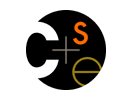
|

CSE 410 Computer Systems - Homework 1 - Spring 2010 |
|
 CSE Home CSE Home |
 About Us About Us |
 Search Search |
 Contact Info Contact Info |
Due: Thursday, April 8, at 11 pm.
The purpose of this assignment is to get some practice with binary encodings of numbers and characters. All binary and hexadecimal integers should be treated as 16-bit numbers, 2's complement integers.
General hint: When converting between binary and decimal, it may be faster to convert to/from hexadecimal first, rather than dealing with the individual bits one by one. However, you should know how to do the conversions either way (directly from binary, or via hex numbers).
Obviously, many of these questions can be answered trivially by typing numbers into a calculator and pushing a button. Please be sure you can do them without having to rely on that.
We suggest you show your work or partial results so if your answer isn't completely correct we can fairly assign partial credit.
0000 1000
0011 01010101 0000 1100 11011111 1110 1101 01011000 0000 0000 00010x019a0xff3d0xFACE0x10100x0017 + 0x00420x0017 - 0x00420x0BAD + 0xF00D0x1101 - 0xff0f"Foo" would
be stored in 4 bytes with the hex value 0x466f6f00. "Hi y'all!""x+1=17?"0x4974 2773 2061 2022 7365 6372 6574 2221 21000x596f 7527 7265 2064 6f6e 652e 00Turn-in Instructions: Use the turn-in drop box link on the main course web page to submit a file containing your solutions. You can use any common file format, including plain text, word, or pdf. If you wish, you could also scan in a hand-written solution and submit that, but if you do that, please be sure your handwriting is neat and legible. Please be sure to include your name at the top of your answers.
|
Computer Science & Engineering University of Washington Box 352350 Seattle, WA 98195-2350 (206) 543-1695 voice, (206) 543-2969 FAX [comments to Hal Perkins] |
|